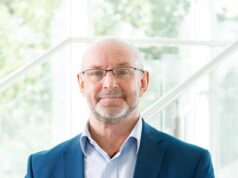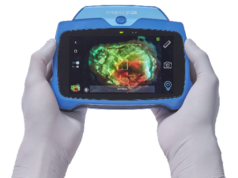“A lot more bacteria than anticipated” have been discovered on wounds in a patient cohort consisting of 89% venous leg ulcers, and using fluorescence imaging proved superior for detecting infection in wounds. This was the conclusion of Tomas Serena (Warren, USA), the president of the Association for the Advancement of Wound Care, presenting the results in the new iWounds programme at the Charing Cross Symposium (CX; 15–18 April, 2019). The recent discovery follows years of clinical assessment, fluorescence imaging and research, Serena noted.
Serena opened his presentation with a case, as he told the CX audience about a patient with a venous leg ulcer who was placed into a clinical trial. Although the wound did not look infected, the patient was subsequently treated, as he tested positive for generic staph aureus. Serena described this experience, saying: “When the person who controls your budget for the next
10 years is in your clinic and you get the diagnosis of infection incorrect […] you begin a journey into how to do a better job, and that is what we have been on for 14–15 years.”
He argued that symptoms can vary widely between patients and many may even be asymptomatic. This idea stimulated Serena and colleagues to initially conduct a pilot study to evaluate the diagnostic accuracy when fluorescence imaging was used adjunctively to the clinical severity score (CSS) assessment, to identify wounds with moderate to heavy bacterial loads.
Adult wound care patients were recruited for a prospective, single-blind, single-site clinical trial. With 89% of the cohort having venous leg ulcers, the average wound area was 10.81cm2, and the majority had been living with their wound for over 12 months. “It was a three-step process. First, the investigator carried out a CSS assessment, then we took a picture, to see if the fluorescent image demonstrated infection. Then finally, we did a quantitative tissue biopsy and histology to confirm [infection],” he explained.
A positive fluorescent image, Serena said, has a 100% accuracy rate of detecting infection. Of note, he said that the low number of true negatives in this population prevented the calculation or statistical analysis of specificity and negative predictive value.
According to Serena, the results of the clinical questionnaire highlighted the fact that fluorescence images guided at least one aspect of wound care in 90% of study patients. He reported that clinician confidence was seen to increase by 21%, while such images enabled the identification of true positive wounds missed by CSS alone (in 47% of wound treatment plans).
Outlining next steps in this field, Serena noted an additional project his team has been working on: “We are now developing biomarkers for infection, to be used in clinical trials”. Although he said that these are currently available in Europe, they are not presently approved for use in the USA. Thus, Serena and his colleagues set out to develop an assay to detect bacterial proteases from commonly known wound pathogens.
Of the 366 patients studied, Serena stated the most interesting finding was the 133 patients who were not clinically diagnosed with infection, but tested positive for bacterial protease activity (BPA). This indicated that the initial stages of pathogenicity do not necessarily result in observable clinical signs of infection.
According to Serena, the US Food and Drug Administration (FDA) responded to this finding by implying that there remains no proof that bacteria is bad for wounds. Acknowledging the truth in this, Serena and colleagues initiated a large trial aimed at proving that BPA has prognostic power in predicting the time for wounds to heal. What they found was that positive tests for BPA indicated a high likelihood that wound healing would be impaired. “It actually is a really good surrogate endpoint”, noted Serena, as he put forward that BPA should be viewed as a point-of-care immediate predictor of healing, which has been derived prospectively in a randomised controlled trial. “We have been in contact with the FDA this week, and are hopeful we can get this approved in the USA”, Serena said. “I think we can conclude that from both of these diagnostics, what we have found is a lot more bacteria than we anticipated, and bacteria locations—we did not anticipate this. The question is now: What do we do about it?”













